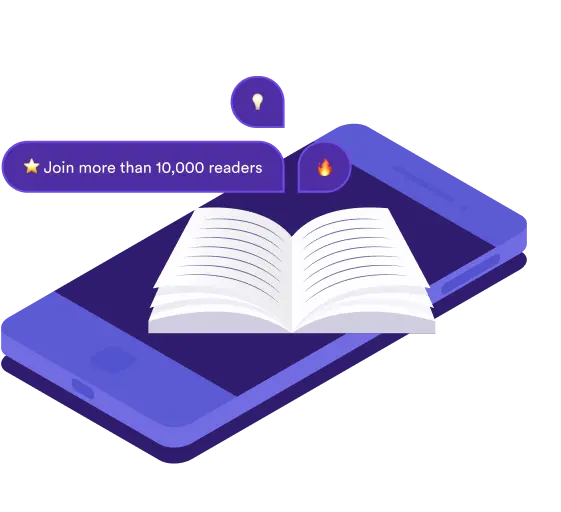Interested in SnackzLAB or SnackzAGENT? 👉🏼 This way!

Enjoying Snackz.ai?
Sign up!
or
I agree to the Privacy Policy and the Terms of Service.
Already have an account?
📩 Check your inbox!
A link to reset your password has been sent to your email address.
Reset Password
No worries! Just enter your email below, and we'll help you reset that password:
Enjoying Snackz.ai?
Sign up!
or
I agree to the Privacy Policy and the Terms of Service.
Already have an account?
📩 Check your inbox!
A link to reset your password has been sent to your email address.
Reset Password
No worries! Just enter your email below, and we'll help you reset that password:
Pierre Bayard
Where would you like to order?
Please select your country to proceed with the checkout.
⚡ Free 3min Summary
How to Talk About Books You Haven't Read - Summary
"How to Talk About Books You Haven't Read" by Pierre Bayard is a witty and thought-provoking exploration of the social dynamics surrounding books and reading. Bayard, a literature professor and psychoanalyst, challenges the conventional notion that one must read a book to discuss it intelligently. He argues that not having read a book can actually enhance conversations, offering a fresh perspective on how we engage with literature. Through examples from renowned authors like Graham Greene, Oscar Wilde, and Umberto Eco, Bayard categorizes different types of "non-reading" and provides practical advice for navigating social situations with creativity and confidence.
Key Ideas
The Concept of Non-Reading
Bayard introduces the idea that not reading a book doesn't necessarily mean ignorance. He categorizes non-reading into various types, such as books you've heard of but never read, books you've skimmed, and books you've forgotten. This theme challenges the stigma associated with not having read certain books and encourages a more open-minded approach to literature.
Social Dynamics of Reading
The book delves into the social pressures and expectations surrounding reading. Bayard argues that people often pretend to have read books to fit in or appear knowledgeable. He offers strategies for navigating these social situations without feeling embarrassed, emphasizing that the value of a conversation about a book lies in the exchange of ideas, not in having read the book cover to cover.
Creative Engagement with Literature
Bayard encourages readers to engage with books in a more creative and imaginative way. He suggests that discussing books you haven't read can lead to more interesting and dynamic conversations. This theme highlights the importance of creativity and intellectual curiosity in our interactions with literature, making the book a refreshing and liberating read for book lovers.
FAQ's
The main argument is that one does not need to read a book in its entirety to discuss it intelligently. Pierre Bayard suggests that not having read a book can actually enhance conversations and offers a fresh perspective on engaging with literature.
Bayard categorizes non-reading into various types, such as books you've heard of but never read, books you've skimmed, and books you've forgotten. These categories challenge the stigma associated with not having read certain books and promote a more open-minded approach to literature.
The book offers strategies for navigating social situations where you haven't read the book in question. These include focusing on the exchange of ideas rather than the act of reading itself, and using creativity and intellectual curiosity to engage in meaningful conversations about literature.
💡 Full 15min Summary
Picture yourself as a literature professor and a writer, often required to discuss books you haven't fully read. This situation, while seemingly contradictory to the social expectation of thoroughly reading important books before discussing them, is more common than you might think.
It's entirely possible to have insightful conversations about books you haven't fully read. However, there's a certain level of dishonesty in society when it comes to admitting this. To alleviate the guilt associated with not reading, consider using a system of abbreviations to indicate your level of familiarity with each book discussed. This way, you can freely express your opinion on books, regardless of whether you've read them or not.
Let's first explore the different types of non-reading. Then, we'll delve into real-life situations where discussions about unread books occur. Finally, we'll offer advice on how to gain from these situations and reflect deeply on them. The goal here is to develop a new theory of reading that acknowledges its complexities and approximations, rather than viewing it as a straightforward process.
The use of these notations serves as a reminder that our relationship with books is multifaceted. It's not just about whether we've fully read them or not. It's about understanding that our interactions with books are nuanced and complex, and that's perfectly okay.
Enjoyed the sneak peak? Get the full summary!
Let's find the best book for you!
AdvertisementSection.TitleNew
AdvertisementSection.SubTitleNew

Get the books directly into your inbox!
✅ New Release
✅ Book Recommendation
✅ Book Summaries
Copyright 2023-2026. All rights reserved.